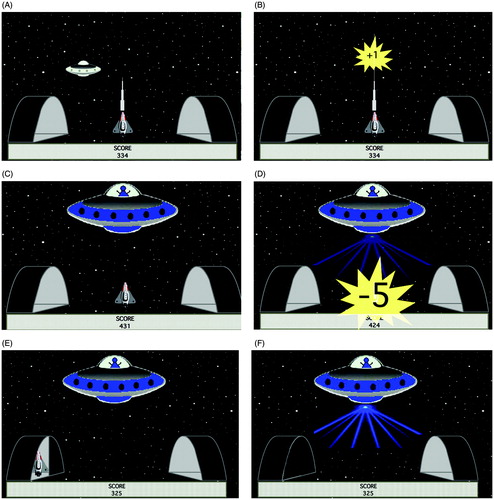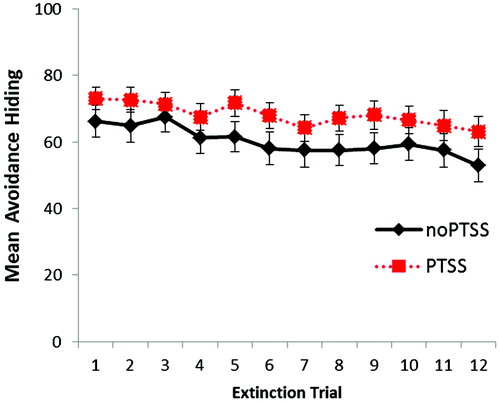Figures & data
Table 1. Demographic characteristics and questionnaire scores for the three participant groups.
Figure 1. Screen events during the spaceship avoidance task. (A) The participant’s ship could move from left to right and fire at target ships that appeared at intervals; (B) successful “hits” were rewarded with 1 point. (C) During the warning period of each trial, a mothership appeared, and the participant’s lasers were ineffective against it. (D) In the subsequent punishment period, the mothership fired lasers repeatedly, each time exploding the participant’s spaceship and causing a loss of 5 points, to a maximum of 25 points lost. (E) The participant could escape or avoid point loss by hiding in either of the two designated “safe areas” at the sides of the screen; the door slid shut behind the participant, or opened when the participant emerged. (F) While the participant’s ship was hidden, the mothership’s lasers were ineffective (no destruction or point loss). The participant could thus hide during the punishment period to terminate point loss (escape response), or prevent point loss all together by hiding during the warning period and remaining hidden throughout the subsequent punishment period (avoidance response).

Figure 2. Escape hiding (hiding during punishment period) across the 12 acquisition trials for (A) all n = 119 participants, (B) n = 105 excluding 14 non-escapers. Error bars represent standard error of the mean.

Figure 3. Avoidance hiding (hiding during the warning period). (A) Avoidance hiding increased across trials, and was greater in the PTSS subgroup particularly toward later trials. (B) Males with vs. without PTSS showed similar levels of avoidance hiding, but (C) avoidance hiding was significantly greater in females with PTSS compared to noPTSS females. Asterisks denote significant group differences between PTSS and noPTSS groups. Error bars represent standard error of the mean.


